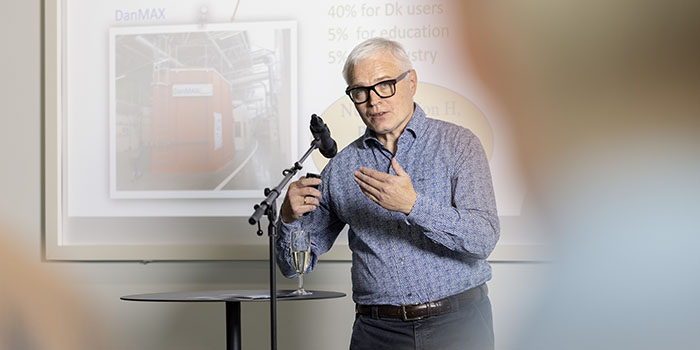
Armed with northern Europe’s biggest imaging centre, Denmark now plays a central role in the growing use of X-ray and neutron imaging.
The 3D Imaging Center (3DIM) is housed in one of DTU’s newest buildings, so the Danish university in a press release. It is the perfect setting for the state-of-the-art world-class facilities, which will be used by researchers, companies, museums, and hospitals. The new instruments at the centre make it possible to carry out unique scans, which can simultaneously reveal exterior shapes while looking inside and seeing things without first having to cut them up and in so doing change their structure.
Also interesting: Prostate cancer detected faster & better with new 3D-imaging tech
“Being able to offer world-class imaging here in Denmark will strengthen Denmark’s position and research within the natural sciences as well as within the technical and health sciences. Access to the latest techniques will also underpin the development of new products and solutions for such diverse areas as new and sustainable forms of energy and the health sector,” says Deputy Director-General Stine Jørgensen from the Danish Agency for Higher Education and Science
Researchers and other users
The 3D Imaging Center primarily houses the new national X-ray infrastructure DANFIX, which has been established in collaboration with the other Danish universities. In addition, it houses the ESS lighthouse on hard materials in 3D, SOLID, which is a key element in Denmark’s initiative in connection with the large European neutron facility, European Spallation Source (ESS) in Lund, Sweden. Finally, the regional data analysis centre QIM (Center for Quantification of Imaging Data from MAX IV), which assists with handling all the data from the scannings, is also housed at the centre.
“The new centre at DTU paves the way for a very wide range of applications. This not only applies to all the different scientific research groups which have already started using the centre—we are also welcoming a variety of completely different user groups. 3D imaging can provide fresh insights into the internal structure and properties of materials, products, and organisms, and the centre can help researchers and companies develop new products and technologies, while the new research facility will also be able to contribute to the increased digitalization of, for example, museum collections,” says Executive Vice President Rasmus Larsen, DTU
Gateway to large research facilities
The new 3D imaging centre will also serve as a gateway to the large European X-ray and neutron radiation facilities, especially to ESS and MAX IV in Lund, but also to the European Synchrotron Radiation Facility (ESRF) in France.
“Our users often start their studies by scanning their specimens at DTU. This may provide fully adequate answers. In case more advanced mapping are require, they can go the next step and apply for a slot at one of the instruments we are building at the large facilities in either Lund or France,” says Professor Henning Friis Poulsen, who heads the new centre.
The centre’s activities are particularly concentrated on four major research areas. One of these is scans of hard materials such as metals and minerals – with applications in Power2X and Co2 storage. Another materials engineering, which covers e.g. wind turbine blades and steel structures. Bioimaging is another important area, in which scans of organs, bones, and plants will contribute to the health sciences and the development of new products in the health sector. Finally, the centre will work with Denmark’s natural and cultural heritage, which includes studies of objects such as fossils and museum pieces.
The inauguration of the 3D imaging centre has been postponed due to the corona pandemic, and the facilities have therefore already been used for some time by several different user groups. The centre has, among other things, assisted the Natural History Museum of Denmark with a scan of a rare juvenile Tyrannosaurus rex skull, and it has also contributed to producing a copy of the Paralympic table tennis player Peter Rosenmeier’s hand prosthesis.
Selected for you!
Innovation Origins is the European platform for innovation news. In addition to the many reports from our own editors in 15 European countries, we select the most important press releases from reliable sources. This way you can stay up to date on what is happening in the world of innovation. Are you or do you know an organization that should not be missing from our list of selected sources? Then report to our editorial team.

